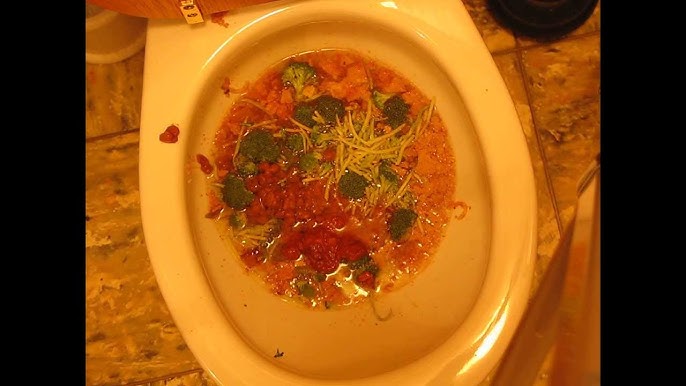Can One to Flush Food in the Toilet?
Can One to Flush Food in the Toilet?
Blog Article
Just how do you really feel in regards to Flushing Food Down the Toilet??

Introduction
Many individuals are usually confronted with the predicament of what to do with food waste, especially when it concerns leftovers or scraps. One usual inquiry that occurs is whether it's okay to purge food down the commode. In this short article, we'll look into the reasons why individuals may take into consideration purging food, the consequences of doing so, and alternate methods for correct disposal.
Reasons why individuals may consider flushing food
Absence of awareness
Some people may not know the potential harm caused by purging food down the bathroom. They might incorrectly believe that it's a harmless method.
Ease
Purging food down the bathroom may feel like a fast and simple option to throwing away undesirable scraps, specifically when there's no nearby trash can readily available.
Laziness
In some cases, individuals might just choose to flush food out of sheer laziness, without considering the repercussions of their actions.
Repercussions of flushing food down the bathroom
Environmental impact
Food waste that ends up in waterways can contribute to air pollution and harm marine ecosystems. Additionally, the water used to purge food can stress water resources.
Plumbing issues
Purging food can bring about clogged up pipelines and drains, triggering pricey plumbing repair services and aggravations.
Kinds of food that ought to not be flushed
Coarse foods
Foods with coarse structures such as celery or corn husks can obtain tangled in pipelines and cause blockages.
Starchy foods
Starchy foods like pasta and rice can take in water and swell, bring about obstructions in pipelines.
Oils and fats
Greasy foods like bacon or food preparation oils ought to never be purged down the commode as they can solidify and create obstructions.
Proper disposal approaches for food waste
Making use of a waste disposal unit
For homes furnished with waste disposal unit, food scraps can be ground up and purged through the pipes system. However, not all foods are suitable for disposal in this fashion.
Recycling
Certain food packaging products can be reused, reducing waste and decreasing environmental influence.
Composting
Composting is an environment-friendly means to deal with food waste. Organic products can be composted and made use of to enhance dirt for gardening.
The significance of correct waste administration
Decreasing ecological harm
Appropriate waste monitoring practices, such as composting and recycling, help decrease contamination and protect natural resources for future generations.
Securing plumbing systems
By avoiding the practice of flushing food down the commode, property owners can protect against expensive plumbing repair work and maintain the stability of their pipes systems.
Verdict
In conclusion, while it might be tempting to purge food down the bathroom for ease, it is essential to comprehend the potential effects of this activity. By adopting correct waste monitoring methods and taking care of food waste sensibly, people can contribute to much healthier plumbing systems and a cleaner atmosphere for all.
FLUSH FOOD DOWN THE TOILET?
FLUSHING FOOD CAN CAUSE BLOCKED DRAINS IN YOUR HOME
All of the plumbing fixtures in your home are connected to the same sewer pipe outside of your home. This outdoor sewer pipe is responsible for transporting all the wastewater from your home to the Council sewer mains. Even small pieces of food that go down the kitchen sink can cause problems for your sewer. It should therefore be obvious that flushing larger bits of food, such as meat, risks a clog in either the toilet itself or the sewer pipes. Flushing greasy food is even more problematic because oil coagulates when it cools, coating the interior lining of your pipes.
THE TOILET IS NOT A BIN
Food isn’t the only thing that people shouldn’t be flushing down the toilet. People use the toilet to dispose of all kinds of things such as tampons, makeup wipes, dental floss, kitty litter and even underwear. Water goes to great lengths to educate residents about the high costs and stress placed on wastewater treatment systems simply from people flushing the wrong stuff down the toilet. It costs taxpayers millions of dollars each year, and homeowners thousands in blocked drain repairs.
FLUSHING FOOD IS A WASTE OF WATER
Flushing food is a waste of our most precious resource - water. In June this year Level 1 water restrictions were introduced to protect water supply from drought conditions. Much of New South Wales continues to be affected by prolonged drought with recent figures revealing up to 97 per cent of the state remains in drought. Depending on whether you have a single or dual flush toilet, every single flush uses between five and 11 litres of water. In the current climate this is a huge amount of water to be wasting on flushing food that should be placed in the bin (or better yet, the compost).
https://www.jabplumbingsolutions.com.au/blog/can-you-flush-food-down-the-toilet

As a person who reads about , I think sharing that excerpt was really useful. Those who enjoyed our page please make sure you remember to pass it around. We appreciate reading our article about Is it safe to flush food (especially rice) down the toilet?.
Click Here Report this page